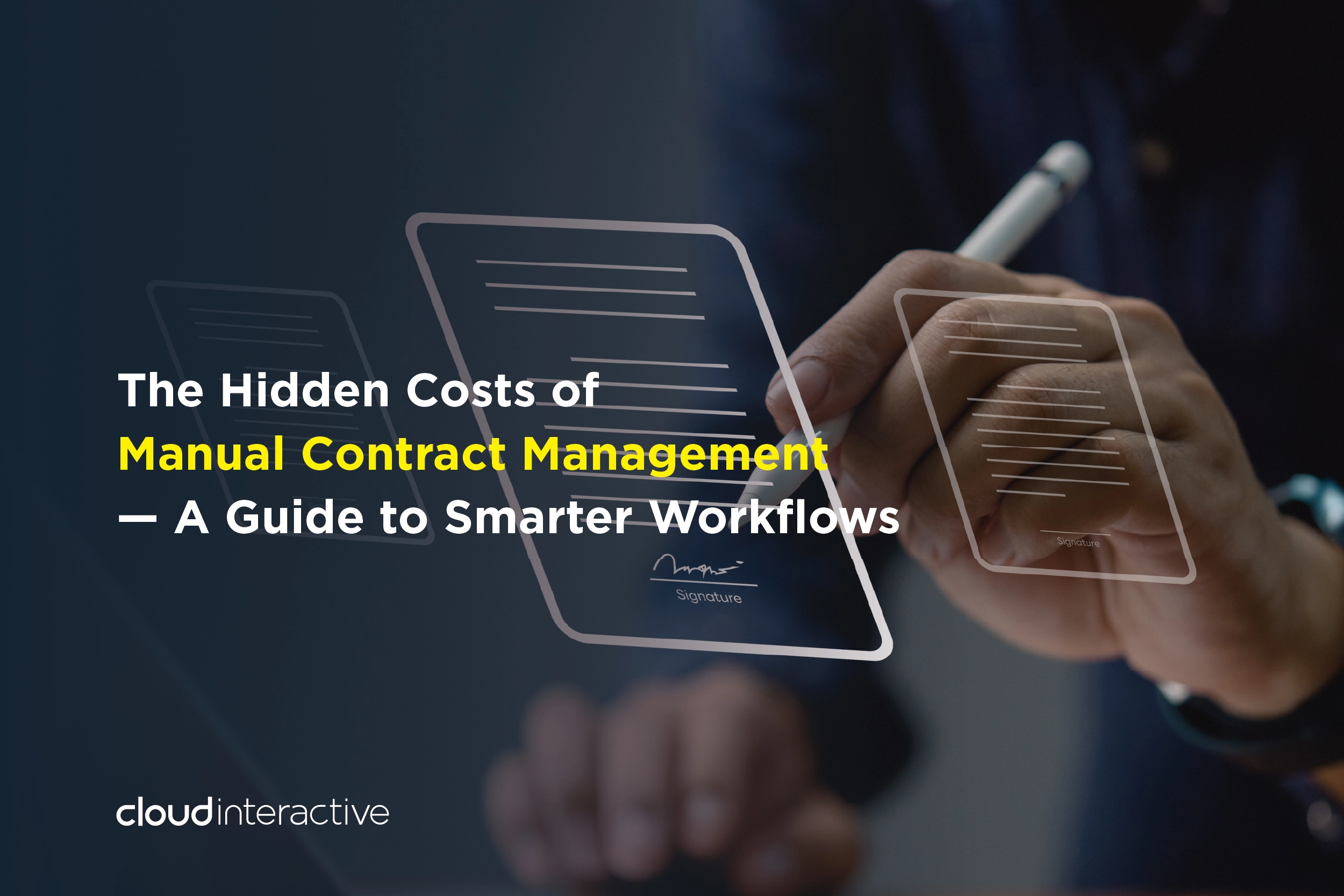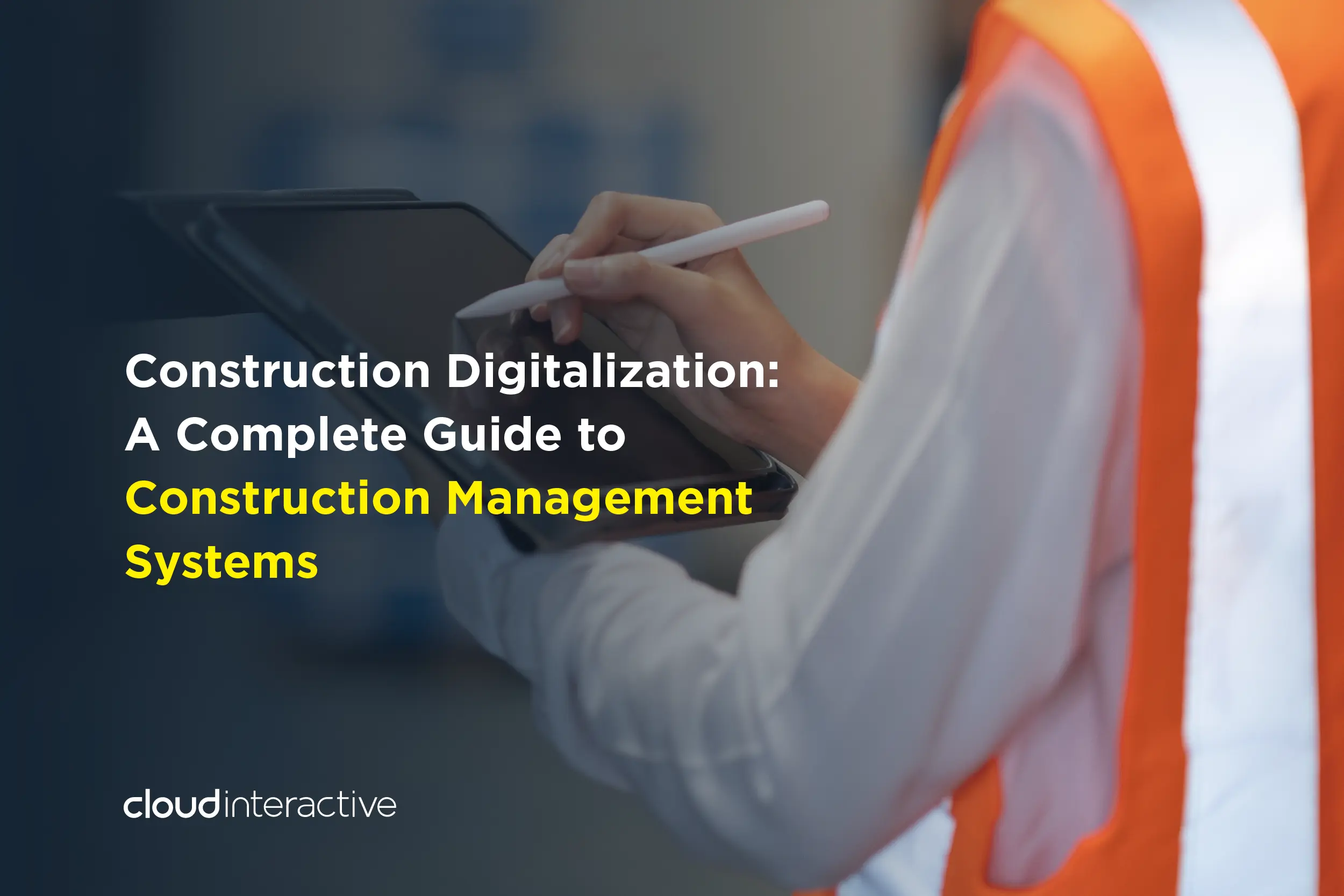
Construction Digitalization: A Complete Guide to Construction Management Systems
Table of Contents
- Common Construction Management Challenges
- What Is Construction Management Software(CMS)?
- How Does It Support Every Role on the Team
- Benefits of Using CMS
- Core Features You Should Look For
- Key Factors to Consider When Selecting Construction Management Software
- Our Client’s Success Story: CEC
- Emerging Trends in
- Why Customization Matters? Find Your Perfect Fit
Construction projects are often full of unexpected challenges. From missed deadlines and rising costs to miscommunication between teams, these issues can easily turn into costly setbacks. When problems aren’t caught early or projects lose alignment, delays and budget overruns become all too common, creating frustration for both project teams and stakeholders.
But there’s good news – construction management software can help solve many of these issues. In this post, we’ll provide a comprehensive guide, covering the following topics to give you a clearer understanding of how digitization can improve your construction project management:
Most Common Construction Management Challenges
(1) Labor Shortages and Aging Workforce
The construction industry is facing a persistent labor shortage, largely driven by an aging workforce and a lack of skilled new entrants. A significant portion of experienced workers are nearing retirement, while younger generations are increasingly drawn to other industries that offer more stability and competitive pay. At the same time, many job seekers interested in construction roles lack the necessary skills or experience, making it difficult for companies to fill key positions.
This widening skills gap is leading to tangible challenges on the ground – project delays, rising labor costs, and decreased productivity across teams. Many construction firms are struggling to maintain efficiency as they operate with understaffed crews and limited expertise. The long-term impact is a slowdown in project delivery and increased pressure on already stretched resources.
(2) Technological Adoption Delays
While innovation is transforming industries at a rapid pace, the construction sector remains slow to adopt key technologies like BIM, AI, and drones. Many firms still rely on manual workflows, and real-time collaboration tools are often overlooked.
As a result, productivity continues to lag, making construction one of the least digitalized sectors globally. The gap between construction and other industries is widening, with efficiency and innovation falling further behind.
(3) Communication and Collaboration Failures
Poor communication is a major factor behind project failures in the construction industry. In a field as complex as construction, where multiple parties must work in sync, a lack of structured communication can quickly lead to confusion and misalignment. This often results in delays, rework, budget overruns, and ultimately, a final product that fails to meet stakeholder expectations.
(4) Budget Overruns and Cash Flow Issues
In the construction industry, payment delays due to the invoicing system are a common challenge. When payments fall behind, it can significantly impact a company’s cash flow, limiting funds for other projects and causing unnecessary delays. This not only affects the financial stability of the business but also contributes to cost overruns, as companies struggle to balance their resources across multiple projects.
(5) Time Management and Scheduling Conflicts
Time constraints are often cited as a leading cause of defective designs, increased accident rates, and financial losses in the construction industry. When project deadlines are missed, contractors may resort to cutting corners in an attempt to make up for lost time. Unfortunately, this can lead to a vicious cycle, with delays compounding and costs rising as defects are discovered and rectified, or as companies risk penalties due to contract breaches.
(6) Safety and Compliance Risks
Construction management faces three main compliance challenges: worker safety, permit approvals, and environmental regulations. Safety remains a major concern due to the “Fatal Four” hazards: falls, struck-by incidents, electrocution, and caught-in/between accidents, which account for the majority of construction-related deaths. Despite existing safety protocols, these risks persist due to poor training, lack of enforcement, and inadequate protective measures.
Permit application delays are another challenge, often caused by complex regulations, changing standards, inconsistent documentation, and coordination issues among stakeholders. These factors can significantly delay project timelines and increase costs, especially for commercial developments.
Environmental compliance is also critical, covering pollution control, waste management, and resource use. New standards like ISO 22057 are pushing construction companies to integrate environmental data into digital planning systems. Failing to comply can lead to legal issues, reputational damage, and project disruptions.
(7) Administrative Burdens and Lack of Data Insights
Data silos occur when critical project information such as estimating, procurement, and operations is stored in disconnected systems or spreadsheets, leading to duplicated efforts, miscommunication, and costly errors. For instance, unlinked estimating and procurement data can result in conflicting bills of quantities, delaying planning and execution. These inefficiencies are compounded by a continued reliance on manual tools, limiting reporting accuracy and scalability.
Alongside this, administrative tasks driven by regulatory requirements consume a large portion of project teams’ time, diverting focus from on-site supervision. This combination of fragmented data and excessive paperwork contributes to project delays, rework, and substantial financial losses.
What is Construction Management Software?
Construction projects are complex, high-stakes endeavors involving dozens of moving parts. From coordinating timelines and budgets to managing multiple teams and subcontractors, traditional methods like spreadsheets and paperwork just don’t cut it anymore.
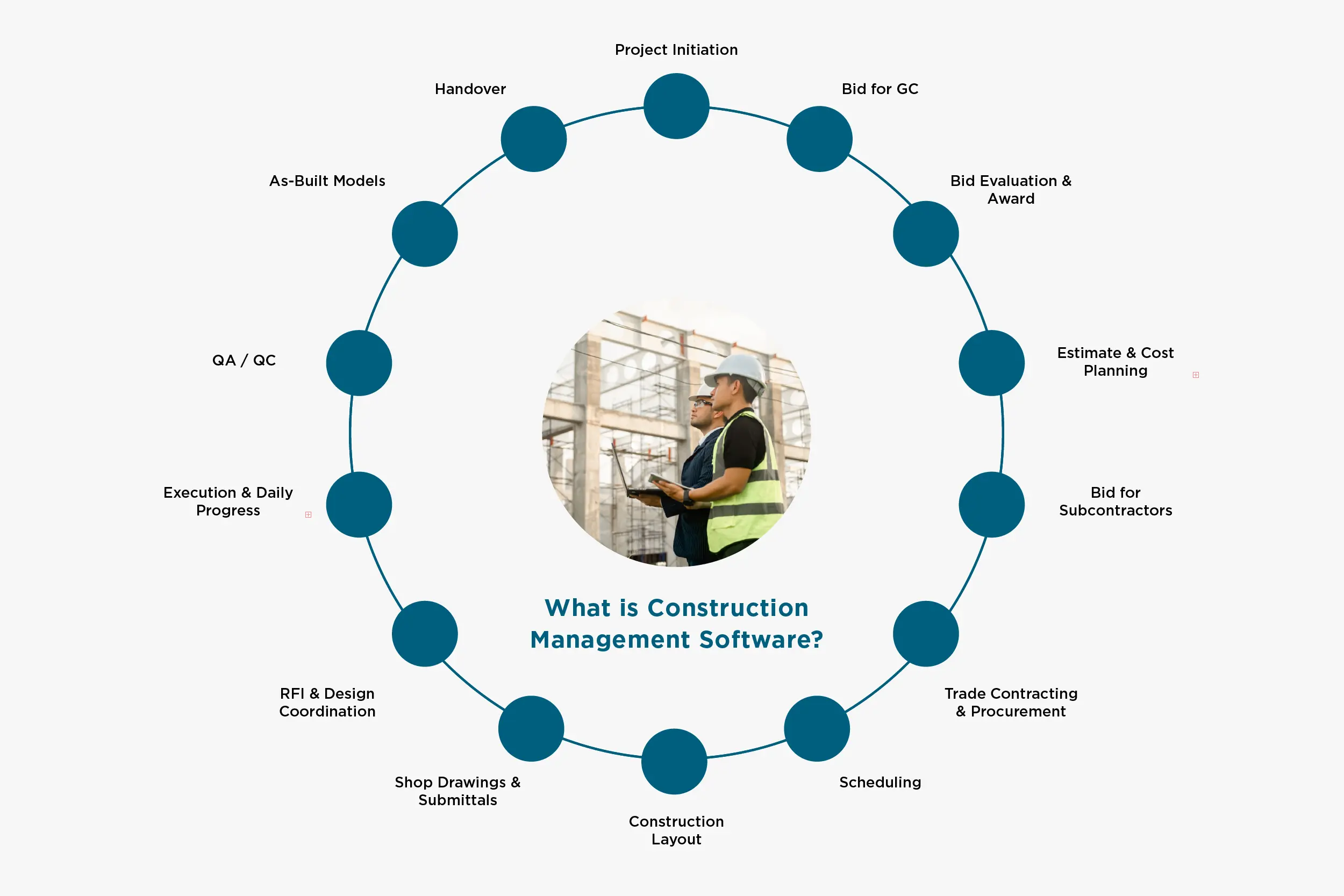
How Construction Management Software Supports Every Role on the Team
While the project manager may lead the charge, successful construction project management is a collaborative effort involving multiple stakeholders, each with unique responsibilities that impact the project’s success.(1) Project Owner
The initiator and primary stakeholder – the project owner – funds the project and makes final decisions on budget, scope, and delivery method. Construction project management software gives them real-time visibility to stay informed about construction progress and spending.(2) Project Manager
The project manager oversees day-to-day operations, keeps the project on schedule and within budget, and ensures communication flows between all parties. The software acts as their control center, enabling efficient task delegation, tracking, and reporting.(3) General Contractor
Responsible for site operations, general contractors hire subcontractors, manage permits, supervise crews, and report progress. They rely on software to keep all aspects of the job site organized and transparent.(4) Subcontractors
These specialists handle specific trades like electrical, plumbing, or HVAC. While their interaction with project managers may be limited, their tasks are integral. Integrating their work into the project management system helps track progress and avoid bottlenecks.(5) Suppliers
(6) Site Supervisors
Site supervisors play a critical role in overseeing daily operations on construction sites. They are responsible for coordinating tasks, ensuring work is performed safely and to specification, managing subcontractors, inspecting progress, and reporting to project managers. A construction management app gave them on-the-go access to daily logs, safety checklists, and task assignments, allowing for real-time updates from the field and faster issue resolution, while reducing paperwork and human error.(7) Design Team (Architects, Engineers, Designers)
The design team produces detailed plans, manages revisions, responds to RFIs (Requests for Information), and maintains the design intent throughout construction. Construction program management software supports the design team by providing a centralized platform for storing, sharing, and updating all design documents and communications. It ensures that everyone is working from the latest set of drawings, reducing the risk of errors due to outdated information. The software facilitates real-time collaboration on revisions and change orders, streamlining back-and-forths between teams.(8) Estimator
Working closely with the project manager, the estimator develops the project’s cost breakdown. Construction program management software helps them access real-time data on material prices and labor costs, making forecasts more accurate and budgets more realistic.Interested In a Custom Construction Management System?
Your workflows are unique, and your software should be too. At Cloud Interactive, we specialize in building tailored construction management solutions that align with your operations, compliance needs, and existing systems. With over 15 years of experience, we don’t just deliver tools, we build the right experiences for your users.
5 Benefits of Using Construction Project Management Software
(1) Enhanced Efficiency and Productivity
By simplifying operations and reducing manual work, construction management software enables efficient project delivery while maintaining accuracy and control over resources. It automates repetitive tasks, minimizes errors, and streamlines workflows, allowing construction teams to focus more on high-value activities and less on administrative burdens.
(2) Improved Collaboration and Communication
Construction management software provides a centralized platform that streamlines communication across all project stakeholders. Real-time messaging, shared dashboards, virtual meetings, and automated notifications keep everyone connected and informed, regardless of location. With better visibility into project progress and performance, teams can collaborate more effectively, quickly address issues, and stay aligned on tasks and deadlines.
(3) Cost Control and Accurate Forecasting
By providing real-time visibility into budgets, expenses, and project finance, the construction management system helps companies control costs and improve forecasting. With integrated accounting tools, teams can track spending as it happens, quickly identify budget variances, and adjust resources before costs spiral out of control.
It also streamlines financial processes like payroll, invoicing, and cost estimation, reducing manual errors and improving accuracy. Access to real-time financial data and automated reporting allows project managers to make faster, data-driven decisions, leading to better cost forecasting and higher profitability.
(4) Better Organization and Resource Management
More importantly, it brings clarity and precision to resource management, a key challenge that materials often come from multiple suppliers worldwide. By tracking usage against budgets, minimizing overstock, reducing waste, and optimizing delivery schedules, the software directly supports better cost control and operational efficiency, ultimately improving project profitability and client satisfaction.
(5) Risk Mitigation and Compliance
Construction management software empowers project teams to proactively identify risks and potential bottlenecks early in the project lifecycle, minimising costly delays and disruptions. Beyond risk mitigation, CMS streamlines quality management and regulatory compliance by providing tools for consistent audits, inspections, and safety monitoring. This not only ensures adherence to industry standards but also drives operational efficiency, allowing enterprises to deliver projects with greater confidence, control, and reliability.
6 Core Features of Construction Management Software
(1) Project Management
Construction management software offers powerful tools like Gantt charts, task automation, and critical path analysis to streamline project scheduling and resource allocation. These tools help map out tasks, set deadlines, and visualize the project from start to finish. Additionally, integrating features such as weather forecasts and potential delays helps anticipate risks and avoid disruptions.
Real-time updates ensure all team members are informed of any changes to the schedule, improving communication and adherence to deadlines. Task automation further enhances efficiency, allowing for seamless resource allocation and timely project completion.
(2) Budget Management
Construction company management software with robust cost management features provides comprehensive tools for budgeting, cost estimation, and financial forecasting, all integrated with accounting systems. These solutions enable seamless expense tracking, payroll management, invoicing, and real-time cash flow monitoring, reducing manual work and errors. By leveraging these tools, construction enterprises can generate accurate cost estimates and forecasts, ensuring more predictable financial outcomes and minimizing the risks of cost overruns.
(3) Document Management
(4) Collaboration Tools
Through real-time communication platforms, the software enables team messaging, virtual meetings, and sharing of dashboards. Cloud-based solutions ensure seamless collaboration across multiple sites, promoting instant connectivity between office teams and on-site workers. Collaboration tools such as real-time editing, document sharing, and comment threads are essential for keeping teams aligned, whether they’re in the office or out on the field.
(5) Reporting and Analytics
Construction management software with real-time data analytics is essential for optimizing project performance. It provides valuable insights into key metrics such as KPIs, margins, productivity trends, and earned value tracking. These capabilities not only give construction managers a comprehensive overview of project progress but also highlight areas that need improvement. With real-time updates and detailed reports, managers can make informed decisions quickly, ensuring projects stay on track and within budget.
(6) Bid Management
Bid management is a critical function in construction projects, which is essential for operational efficiency, regulatory compliance, and project transparency. Especially in public sector projects or large-scale private developments, managing the bidding process through a centralized platform allows teams to streamline bid package distribution, track submissions, evaluate proposals, and communicate with vendors in one place.
In Taiwan, this function is particularly important due to legal requirements under the Government Procurement Act and directives from the Public Construction Commission, which mandate complete digital records of tendering activities. A systematized approach ensures consistency across key stages such as budget planning, qualification review, bid evaluation, contract awarding, and beyond.
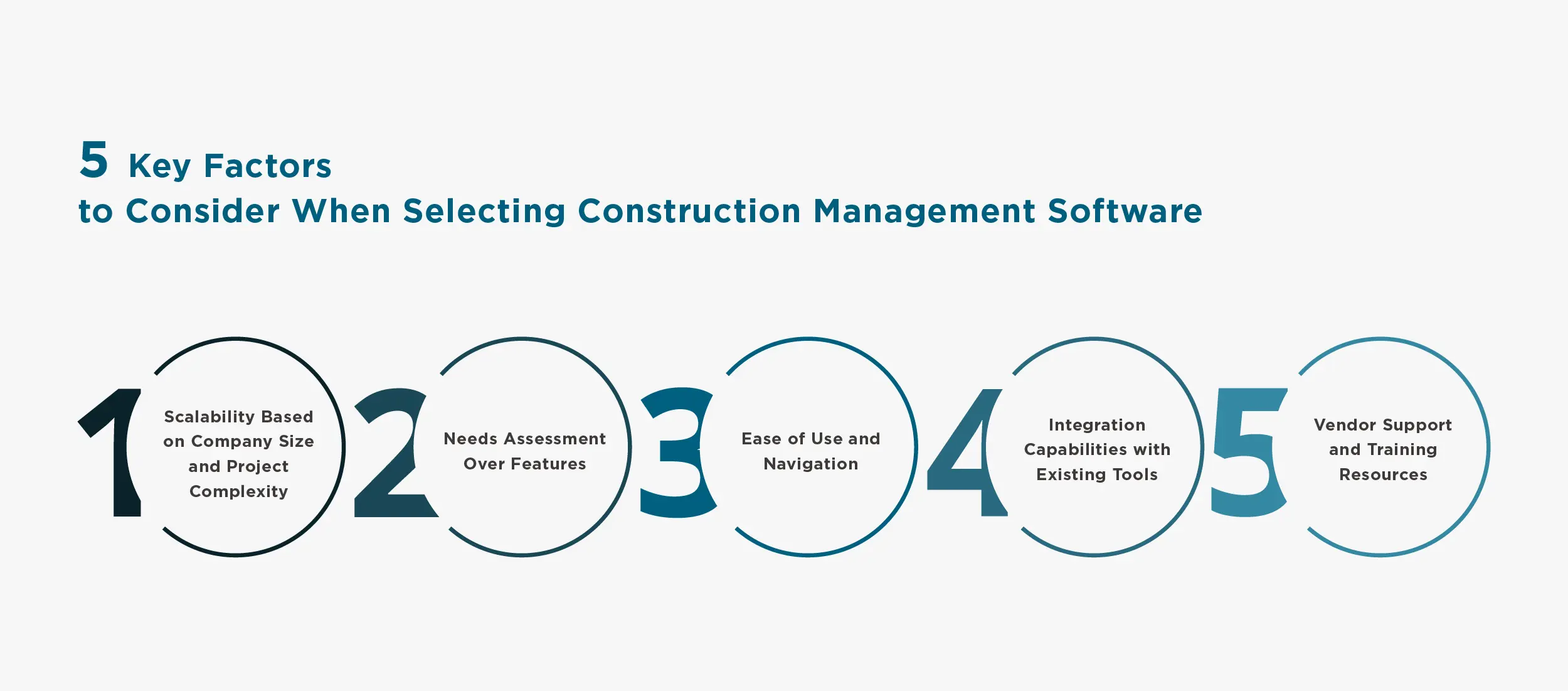
Key Factors to Consider When Selecting Construction Management Software
(1) Scalability Based on Company Size and Project Complexity
Scalability is one of the most important factors to consider in construction project management software. As your business expands and project complexity increases, you need a solution that grows alongside you: a dynamic approach that adapts to your evolving needs.
(2) Needs Assessment Over Features
Relying solely on a feature checklist risks choosing a tool that looks good on paper but doesn’t fit your team’s needs. This often leads to low engagement, workflow disruptions, and wasted resources. On the other hand, a pain point–driven approach streamlines operations, supports smoother transitions, and delivers real-world results. Organizations that align software choices with everyday tasks position themselves for stronger project outcomes, higher user satisfaction, and long-term success.
(3) Ease of Use and Navigation
A well-designed UX/UI in construction management software is especially beneficial for on-site workers, so they can easily navigate the interface on a busy and distracting construction site. The user-friendly design minimizes the learning curve, lowers resistance to adoption, and enables field teams to focus on their core responsibilities rather than struggling with complex technology.
(4) Integration Capabilities with Existing Tools
(5) Vendor Support and Training Resources
Look for providers that offer comprehensive customer service. A provider that offers strong customer service ensures smooth implementation and timely assistance for troubleshooting or software updates. Additionally, training resources such as demos, tutorials, and onboarding programs are essential for maximizing the software’s utility, helping your team fully leverage its features.
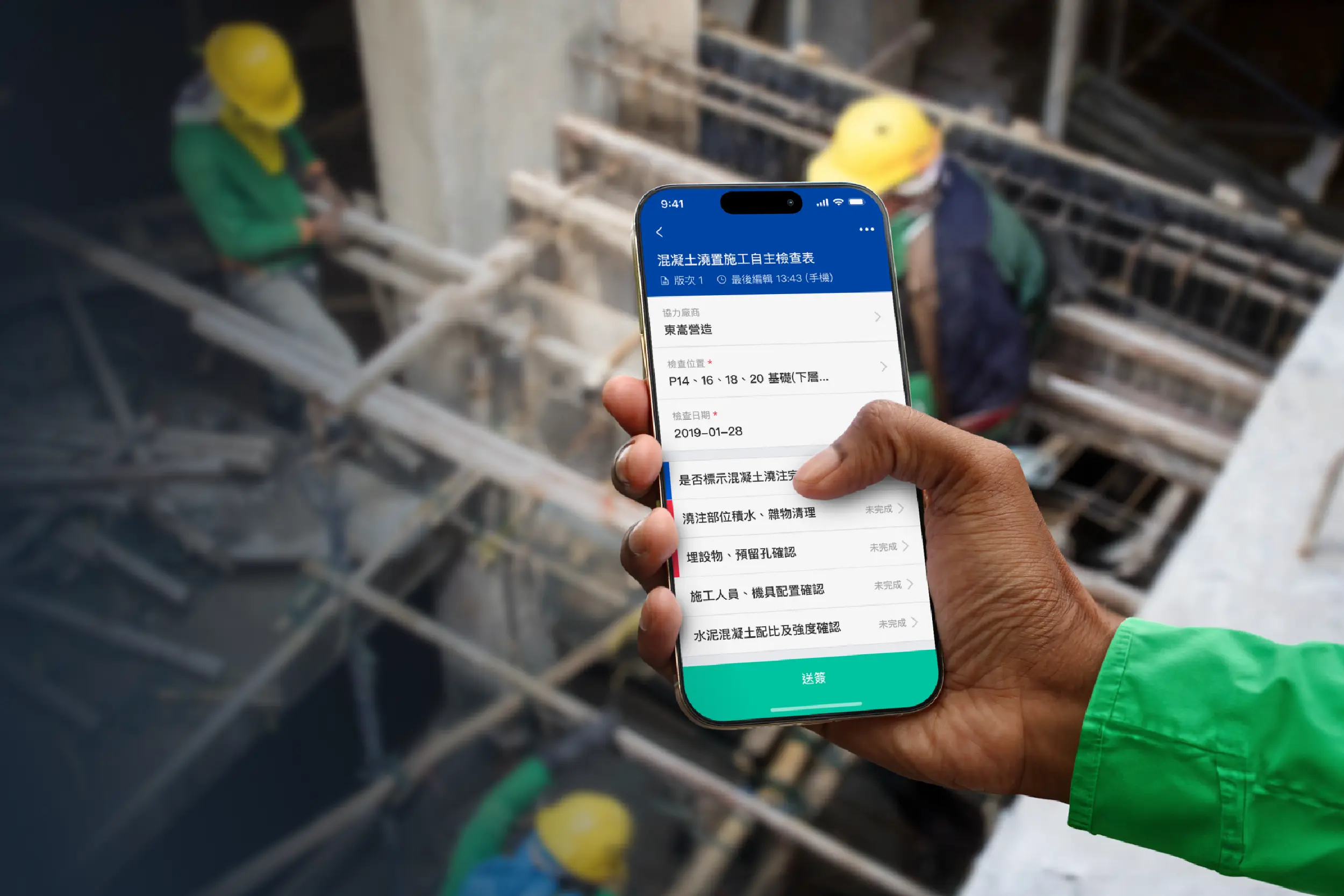
Client Success Story
CEC, a leading construction company in Asia, faced challenges with managing an expanding number of international projects. Issues included difficulties in digitalizing self-check processes, controlling worksites, and establishing real-time tracking and communication mechanisms. The diverse workforce, with varying ages and roles, added complexity to the management process. Cloud Interactive showcased its specialty in developing user-centric solutions. The design team conducted field research and user group interviews, and got down to the day-to-day construction tasks to understand what their end users needed.• Cloud-based platform for real-time photo uploads, self-checklist updates, and issue management.
• User-friendly design tailored to the construction environment, improving task focus and reducing distractions.
• A backend system that streamlined self-check templates, reducing communication and management costs.
• Flutter-based app compatible with both iOS and Android, ensuring wide accessibility.
• Integrated front-end and back-end interfaces for easy service access and smoother user experience.
Get a Tailored Solution For Your Construction Business Today.
Emerging Trends in Construction Project Management Software
(1) Integration with IoT Devices for Real-Time Monitoring
The integration of IoT sensors on construction equipment, materials, and wearables is transforming how construction sites are managed by providing real-time tracking of site conditions, machinery health, and worker safety. This trend enables predictive maintenance, efficient inventory tracking, and immediate hazard detection, such as equipment malfunctions or unsafe environmental conditions, enhancing operational efficiency and safety on-site. IoT-enabled systems also help in monitoring worker well-being, ensuring a safer working environment by promptly identifying potential risks. By connecting these IoT sensors with BIM systems, construction project management software can now provide live updates and visualizations of project progress. This integration not only streamlines workflows but also helps identify delays or issues before they escalate, enabling timely interventions. As a result, enterprises can optimize both productivity and safety, reducing costly downtime and improving project timelines.(2) AI-Powered Predictive Analytics
(3) Mobile Apps for On-Site Communication
(4) Sustainable Construction Tech
As sustainability becomes a priority in the construction industry, digital solutions are evolving to help companies meet environmental goals. Modern construction company management software is now equipped with tools to track carbon footprints, material waste, and energy consumption, which are essential for reducing environmental impact. These software solutions enable construction enterprises to streamline their operations while adhering to sustainability standards, such as LEED certifications, by automating emissions reporting and integrating renewable energy options.There’s No One Size Fits All – Find Your Perfect Fit
Finding the right Construction Management Software starts with knowing your business inside and out. Take the time to evaluate your strengths, pain points, and goals. Understand who in your team will be using the system and what their daily challenges look like. Look for a solution that not only meets your current needs but can also scale with your projects, integrate with your existing tools, and support your long-term growth.By Cloud Interactive
Meet the masterminds behind the curtain at Cloud Interactive. We're not just software developers - we're also a content crew fuelled by caffeine and a thirst for knowledge. We translate tech jargon into plain English, dissect industry trends, and craft helpful tips that are informative and engaging. So, buckle up and join us on a journey through the ever-evolving and exciting world of technology!


